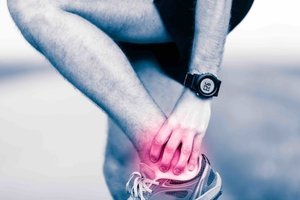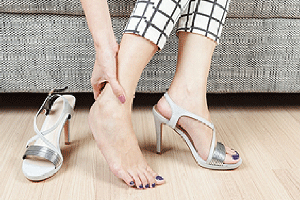ANKLE PAIN & INSTABILITY
There are many conditions that cause ankle pain, stiffness and instability. At the onset of these symptoms, it’s tempting to dismiss these as inevitable part of ageing, without considering whether there are more specific causes. Left untreated, symptoms are unlikely to go away and over time, they may start to interfere with your daily activities.

Ankle Arthritis
Ankle arthritis is a clinical condition in which the joint connecting the foot to the leg (the tibiotalar or ankle joint), has been damaged or the cartilage has become worn out. The symptoms include pain, stifness and swelling of the ankle joint.

Ankle Fractures
It’s relatively common to experience post-surgery pain after an ankle fracture, even if you’ve undergone extensive physiotherapy. One of the risks of this type on injury is that you are at increased risk of developing post-traumatic ankle arthritis.

Ankle Instability
Ankle sprain is one of the most common musculoskeletal injuries, and while most patients recover without any ongoing issues, a small number may experience chronic ankle instability. Recurring sprains are common, as well as constant pain and the feeling that your ankle is going to “give way”.
ARTHRITIS IN FEET, ANKLES & TOES
Arthritis is a disease that is characterised by the inflammation of the cartilage and lining of the body’s joints, causing inflammation, stiffness pain and swelling. It’s often an inherited condition, though bacterial and viral infections, prescription and illegal drug use, and traumatic injuries may also be contributing factors. There are many specific forms of arthritis affecting the toes, feet and ankles as each foot has 33 joints susceptible to the disease.
Osteoarthritis
One of the most common forms of arthritis affecting the ankle is osteoarthritis, which causes excessive strain and the wearing away of cartilage in the joints of the foot. It becomes very difficult and painful for sufferers to move, with the pain and swelling worsening while standing or walking. Even after periods of rest, stiffness often increases. Problems may develop in the heel and ankle area due to joint erosion
Rheumatoid Arthritis
Unlike osteoarthritis, rheumatoid arthritis can develop at any age and there’s no known cause for this condition. Rheumatoid arthritis may result in severed deformities of the joints and may develop conditions such as bunions, hammer toe and claw toe.
Arthritis in Toes (Gout)
More common in men than women, gout is another form of arthritis that may leads to foot complications, as excess uric acid crystals collect in and around the joints of the big toe. The big toe is most commonly affected due to the stress it’s placed under during weight-bearing exercise.

